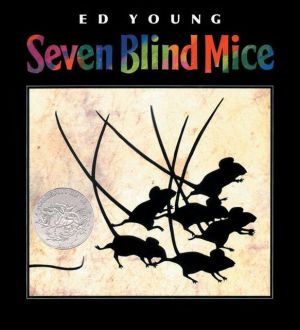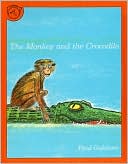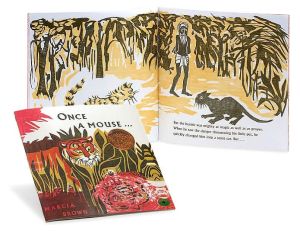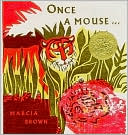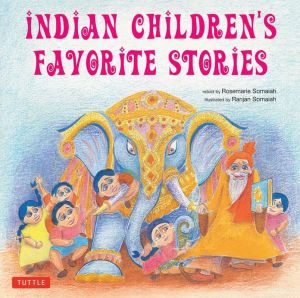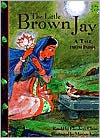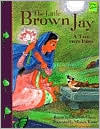Seven Blind Mice
"It's a pillar," says one. "It's a fan," says another. One by one, the seven blind mice investigate the strange Something by the pond. And one by one, they come back with a different theory. It's only when the seventh mouse goes out-and explores the whole Something-that the mice see the whole truth. Based on a classic Indian tale, Ed Young's beautifully rendered version is a treasure to enjoy again and again.\ "Immensely appealing." (The Horn Book, starred review)\ \ \...
Search in google:
Using bold, playful primary colors, Caldecott winner Ed Young creates seven blind mice that will steal the hearts of the very youngest readers. This is a warm and entertaining fable of seven tiny creatures who set out to discover the "Something" by the pond--but who each come back with a different answer. 1993 Caldecott Honor Book. Full color.Publishers WeeklyIn a stunning celebration of color Caldecott medalist Young ( Lon Po Po ) offers a vibrant variation on the fable of the blind men trying to identify an elephant. Seven differently-hued blind mice approach the ``strange Something'' in their midst on successive days and report their findings to the group. A large black square provides the background for each painting, a dramatic contrast to the brilliant images ``felt'' by the sightless rodents. Young's textured, cut-paper illustrations allow readers to visualize just how a floppy ear might be mistaken for a fan (``I felt it move!''); the elephant's curving trunk springs to life as both a jewel-green snake and a glowing yellow spear. The spare text permits greater exploration and enjoyment of the artwork--it may be difficult to read the story straight through without stopping to compare the various images. The ``Mouse Moral'' that concludes the tale--``Knowing in part may make a fine tale, but wisdom comes from seeing the whole''--may seem superfluous to those who prefer the imaginative ``vision'' of the mice. Ages 4-up. (Apr.)
\ Publishers Weekly\ - Publisher's Weekly\ In a stunning celebration of color Caldecott medalist Young ( Lon Po Po ) offers a vibrant variation on the fable of the blind men trying to identify an elephant. Seven differently-hued blind mice approach the ``strange Something'' in their midst on successive days and report their findings to the group. A large black square provides the background for each painting, a dramatic contrast to the brilliant images ``felt'' by the sightless rodents. Young's textured, cut-paper illustrations allow readers to visualize just how a floppy ear might be mistaken for a fan (``I felt it move!''); the elephant's curving trunk springs to life as both a jewel-green snake and a glowing yellow spear. The spare text permits greater exploration and enjoyment of the artwork--it may be difficult to read the story straight through without stopping to compare the various images. The ``Mouse Moral'' that concludes the tale--``Knowing in part may make a fine tale, but wisdom comes from seeing the whole''--may seem superfluous to those who prefer the imaginative ``vision'' of the mice. Ages 4-up. (Apr.)\ \ \ \ \ Children's Literature\ - Joan Kindig\ In Seven Blind Mice, Ed Young offers a fable from India about understanding something only when you know the whole if it. Seven blind mice encounter an elephant by their pond and one by one they explore the beast to find out what it is. Day by day, each mouse goes forth and comes back with an idea as to what it is. On Monday, the red mouse feels the elephant's sturdy leg and surmises that it is a pillar. On Tuesday, the second mouse, the green one, encounters the elephant's trunk and reports that it is a snake. Similarly, the yellow mouse misidentifies the elephant's tusk as a spear. After six mice have gone, the white mouse runs over the entire elephant and realizes by feeling the entire animal that it is an elephant. In this 1993 Caldecott Honor book, Young incorporates colors of the rainbow, counting, and days of the week as well as the moral that the fable provides. Exquisitely done, Young's cut paper illustrations give life to this age-old tale. The scampering mice transfer well to the screen, B.D. Wong's narration is pitch perfect, and the mice are each endowed with their own singular personalities. An interview with author/illustrator Ed Young rounds out this DVD as he discusses how the concept for this book developed. This DVD is ideal for classroom use and for children's literature enthusiasts. Running time: 7 minutes. Reviewer: Joan Kindig, Ph.D.\ \ \ Children's Literature\ - Debra Briatico\ In this ancient fable seven blind mice find something mysterious by a pond. One by one, they investigate the "thing" and make their own guesses as to its identity. Only the seventh mouse sees the whole truth and solves the big mystery. This animal fable teaches a great lesson about wisdom and the need to look at the whole instead of getting lost in the parts. Young readers will enjoy the stunning paper-collage illustrations that can also be used to help youngsters explore the concepts of color, days of the week and ordinal numbers.\ \ \ \ \ Children's Literature\ - Susie Wilde\ Young is one of the finest Asian artists in the children's book field. He reveals his understanding of children in Seven Blind Mice, a Caldecott runner-up. He provides visual delight with strong watercolors and imaginative collage. As he recreates the classic tale of the seven blind men, he serves younger children with weaving concepts of colors, numbers and days of the week. The truths of the book and its theme of limited vision, speak best to older children.\ \ \ \ \ School Library JournalK-Gr 3-- A real winner, on many levels. The first impression is visual delight. Brilliant colors and varied textures of paper collage are placed in striking contrast against velvety black pages. Bold white lettering imposed on the dark background tells of seven blind mice, seen in seven bright colors. Over the course of a week each investigates, in turn, the strange ``Something'' it encounters. To one it is a pillar, to another a snake, to another a cliff. Finally, on the seventh day, the white mouse, running across the thing and remembering what the others found, concludes that it is an elephant. The tale ends with the moral that wisdom comes from seeing ``the whole.'' Adapting the old fable of the blind men and the elephant by weaving in the days of the week, the mice, and the beautiful shapes of the things they see, Young gives children a clever story, wise words, and a truly exciting visual experience.-- Shirley Wilton, Ocean County College, Toms River, NJ\ \
